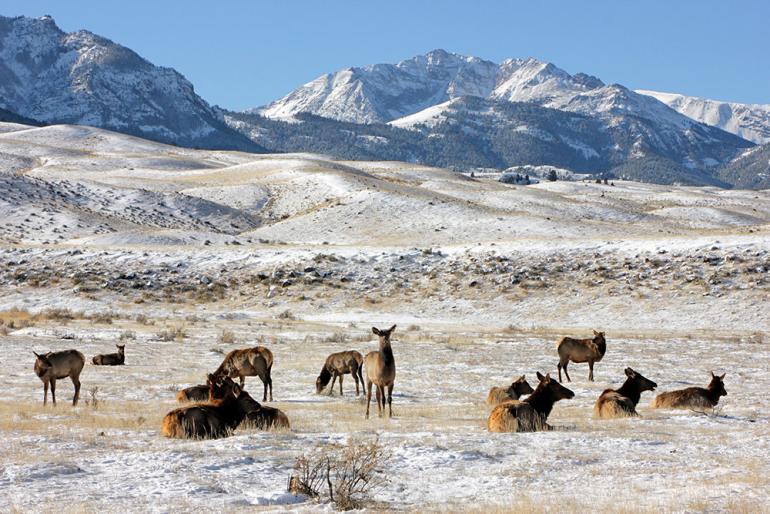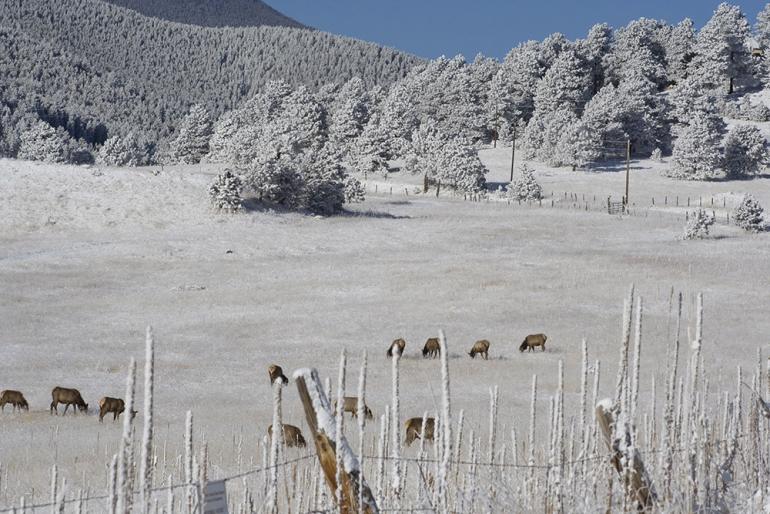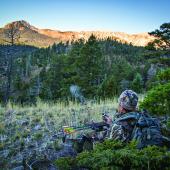Improving Your Odds
A look at shoulder-season hunts.
If you’re an elk hunter in Montana, you’ve probably heard of the relatively new shoulder seasons. If you’re interested in filling your tag, you’ve probably been wondering exactly what this elk-hunting opportunity is all about, so read on if your idea of success is a freezer full of mid-winter wapiti.
A shoulder-season is a firearms season for only antlerless elk that occurs outside the general firearms season for deer and elk. The hunt involves landowners, hunters, and FWP working together in an effort to meet state-mandated guidelines regarding elk-population objectives in accordance with the Montana Elk Management Plan.
The program is not without controversy, with many hunters decrying the additional stress placed on the animals during winter, when they’re already struggling to survive. Others point out that the late hunt encourages landowners to block public access during the regular season, when they might otherwise allow local hunters to thin the herd in order to protect their stockpile of hay.
Regardless, the shoulder seasons are open, and hunters can use their general elk licenses, antlerless elk permits, or antlerless-elk B-tags, the latter obtained by a special drawing, in most cases. Depending on elk numbers, some districts offer over-the-counter B-tags as well. If you have both a general tag and a B-tag of the kind mentioned above, it is possible to harvest two elk during the shoulder season.
Shoulder seasons were first tested in 2015 as a pilot program concentrated largely around the Little Belt, Big Belt, and Castle mountains. This year, early shoulder seasons began on August 15, involving 40 districts from around the state. In many of these districts, the late shoulder season starts November 28 and continues until February 15. There are several notable exclusions to this framework, so it is essential to research the specific district you plan on hunting in order to be sure of the parameters you’ll have to follow. (A guide to the stipulations affecting each district can be found at fwp.mt.gov/hunting.)
Shoulder seasons take place primarily on private land. Some of this land is enrolled in Block Management, but much of it is not. Therefore, it is essential to do some scouting ahead of time and to contact specific landowners if necessary to see if they are interested in letting you hunt.
If you are unable to get out and scout ahead of time, don’t let this deter you from planning a hunt. Do your homework and know the regulations affecting where you plan to go, but then get out there. You may find that just by being out and about, prepared to harvest an elk and knocking on doors, a special opportunity opens up to you. Last year, eager to fill my own elk tag, I headed out toward White Sulphur Springs well-equipped with everything I needed to harvest an elk and an open mind as to how that might come about. As it turned out, I encountered an FWP game warden in the area who provided me with a unique opportunity, a kind of warden-endorsed “Golden Ticket” that allowed me to hunt some elk I’d spotted on a piece of state land. The result was a filled tag and a year’s worth of elk burgers.
For more information, visit fwp.mt.gov/hunting/regulations.














